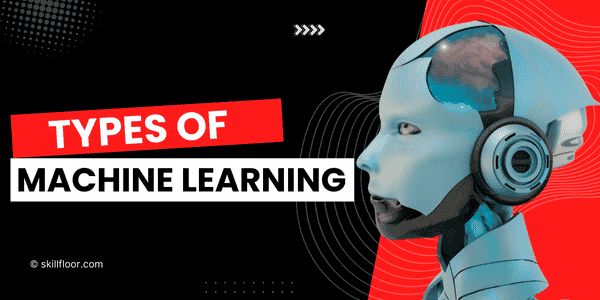A Guide to Prerequisites for Effective Machine Learning
Discover the essential prerequisites for successful machine learning with our comprehensive guide. Learn about the key requirements in the world of ML.

Machine learning has revolutionized the way we approach complex problems and make data-driven decisions. From self-driving cars to personalized recommendations on streaming platforms, machine learning algorithms are at the heart of these advancements. However, before diving headfirst into the world of machine learning, it's essential to lay a solid foundation by understanding and fulfilling certain prerequisites. In this guide, we'll explore the key prerequisites for effective machine learning and set you on the path to becoming a successful machine learning practitioner.
Fundamental Programming Skills
At the heart of every machine learning endeavor lies the mastery of fundamental programming skills. These skills serve as the building blocks that allow you to interact with and manipulate data, implement algorithms, and create sophisticated machine learning models. While there are several programming languages that can be used in machine learning, Python stands out as the lingua franca due to its simplicity, readability, and the abundance of libraries tailored for data analysis and machine learning.
A solid grasp of programming concepts such as variables, loops, conditionals, and functions is essential. These are the tools you'll use to control the flow of your code, process data, and implement the logic of your machine learning algorithms. Furthermore, familiarity with object-oriented programming (OOP) principles empowers you to organize your code in a modular and maintainable manner, a crucial skill when dealing with complex machine learning pipelines.
In the context of machine learning, Python libraries like NumPy, Pandas, and Matplotlib become invaluable assets. NumPy provides efficient array operations, making it possible to perform complex numerical computations on large datasets with ease. Pandas offers powerful data structures and data manipulation tools, simplifying the process of loading, cleaning, and transforming data. Matplotlib allows you to create various visualizations to gain insights from your data and effectively communicate your findings.
Statistics and Mathematics
Statistics is the science of collecting, analyzing, interpreting, presenting, and organizing data to make informed decisions. It provides tools and techniques for understanding patterns, relationships, and variability within datasets. In machine learning, statistics underpins critical concepts like probability distributions, hypothesis testing, and regression analysis. A solid grasp of statistics enables practitioners to quantify uncertainty, validate hypotheses, and evaluate the performance of machine learning models.
Mathematics forms the foundational language of machine learning algorithms. Concepts from calculus, linear algebra, and discrete mathematics are fundamental for understanding how algorithms work and how data is transformed. Calculus, for instance, is essential for optimization tasks, while linear algebra is central to matrix operations and transformations in various algorithms. A strong mathematical foundation empowers machine learning practitioners to develop, fine-tune, and interpret complex models with precision.
Linear Algebra
Linear algebra is a branch of mathematics that deals with vector spaces and linear mappings between these spaces. It forms the foundation for various mathematical and computational concepts used extensively in machine learning, computer graphics, physics, and engineering. In the context of machine learning, linear algebra provides the tools to represent and manipulate data, perform operations on matrices and vectors, and understand the underlying principles of many algorithms.
Key Concepts in Linear Algebra
-
Vectors and Scalars: A vector is a quantity that has both magnitude and direction. It's represented as an array of numbers. Scalars, on the other hand, are single values, often used to scale vectors or represent quantities like time, temperature, or distance.
-
Matrices and Tensors: A matrix is a rectangular array of numbers arranged in rows and columns. Matrices are used to represent linear transformations and store tabular data. Tensors generalize matrices to higher dimensions and are fundamental for deep learning models that deal with multi-dimensional data.
-
Vector Operations: Linear algebra includes operations like vector addition, scalar multiplication, and dot product. The dot product measures the similarity between vectors and finds applications in computing angles, projections, and distances.
Role in Machine Learning
Linear algebra underpins several key aspects of machine learning:
-
Feature Representation: Data points are often represented as vectors, and features are encoded as vector components. This allows algorithms to operate on and process the data efficiently.
-
Model Representation: Machine learning models, especially linear models, use matrices and vectors to represent relationships between features and outcomes. Linear regression, for example, finds the best-fit line through data points by manipulating matrices.
-
Dimensionality Reduction: Techniques like Principal Component Analysis (PCA) leverage linear algebra to transform data into a new coordinate system, reducing its dimensionality while preserving its variance.
Probability and Statistics
Probability deals with the study of uncertainty and randomness. It provides a mathematical framework to quantify the likelihood of different outcomes in situations where multiple possibilities exist. Here are some key concepts in probability:
-
Sample Space: The set of all possible outcomes of a random experiment is called the sample space.
-
Event: An event is a subset of the sample space, representing a particular outcome or a combination of outcomes.
-
Probability Distribution: A probability distribution describes how the probabilities are distributed among the different possible outcomes. It can be discrete (for individual outcomes) or continuous (for outcomes within a range).
Statistics involves the collection, analysis, interpretation, and presentation of data. It aims to extract meaningful insights and draw conclusions from data, while also accounting for uncertainties. Here are some key concepts in statistics:
-
Descriptive Statistics: Descriptive statistics summarize and describe the main features of a dataset using measures like mean, median, mode, variance, and standard deviation.
-
Inferential Statistics: Inferential statistics use sample data to make inferences or predictions about a larger population. It involves hypothesis testing, confidence intervals, and regression analysis.
-
Population and Sample: A population refers to the entire group of items or individuals that you're interested in studying, while a sample is a subset of the population that is used to make inferences about the whole population.
Data Preprocessing
Data preprocessing is a critical step in the machine learning pipeline that involves preparing raw data for analysis and modeling. Raw data often comes with imperfections, inconsistencies, and irrelevant information that can hinder the performance of machine learning algorithms. Data preprocessing encompasses tasks such as handling missing values, dealing with outliers, standardizing or scaling features, and encoding categorical variables into a suitable format.
By cleaning and transforming data into a usable state, data preprocessing ensures that the machine learning models can effectively learn patterns, make accurate predictions, and generate meaningful insights. This step significantly influences the quality and reliability of the final model's outcomes.
Exploratory Data Analysis (EDA)
-
Purpose: EDA is a crucial initial step in the data analysis process that aims to understand the main characteristics of a dataset and uncover patterns, relationships, and potential issues.
-
Visual Exploration: EDA involves creating visualizations like histograms, scatter plots, box plots, and heatmaps to visually explore the distribution of data, identify outliers, and detect trends.
-
Summary Statistics: EDA includes calculating basic statistics such as mean, median, mode, variance, and standard deviation to gain insights into the central tendency and spread of the data.
-
Handling Missing Values: During EDA, missing data points are identified, and strategies for handling them, such as imputation or removal, are decided upon.
-
Data Distributions: EDA helps determine the distribution of data, such as whether it follows a normal distribution or if it's skewed. This information is crucial for selecting appropriate statistical methods and models.
-
Correlation Analysis: EDA includes calculating correlation coefficients and creating correlation matrices to understand relationships between different variables. Positive, negative, or no correlation can provide insights into dependencies within the data.
Cloud Computing Platforms
Cloud computing platforms are powerful and flexible services that provide remote access to a range of computing resources, such as virtual machines, storage, databases, and networking capabilities, over the internet. These platforms, offered by providers like AWS, Google Cloud, and Microsoft Azure, enable individuals and organizations to scale their computing needs without the requirement of owning and maintaining physical hardware.
Users can deploy, manage, and run applications and services on these platforms, taking advantage of the on-demand availability and pay-as-you-go pricing models. Cloud computing platforms have revolutionized the way businesses operate by offering agility, cost-effectiveness, and the ability to rapidly innovate and deploy services globally. They are the backbone of modern technological advancements, supporting everything from web applications to machine learning and big data processing.
Becoming proficient in machine learning requires dedication and a comprehensive understanding of various prerequisites. By mastering programming, mathematics, data manipulation, and other fundamental concepts, you'll be well-equipped to tackle real-world challenges using machine learning. Remember that learning is a continuous process, and the field of machine learning is constantly evolving, so stay curious and keep enhancing your skills. With a solid foundation, you'll be ready to dive into the exciting world of machine learning and make meaningful contributions to the field.




























































